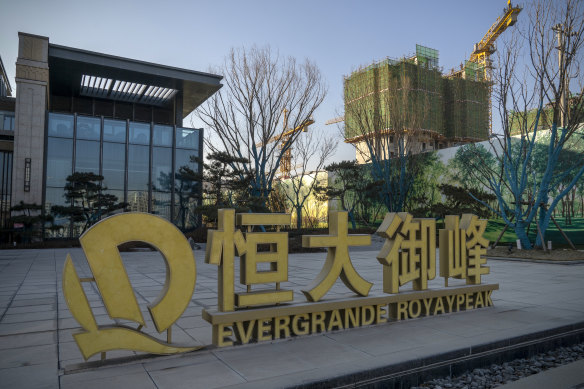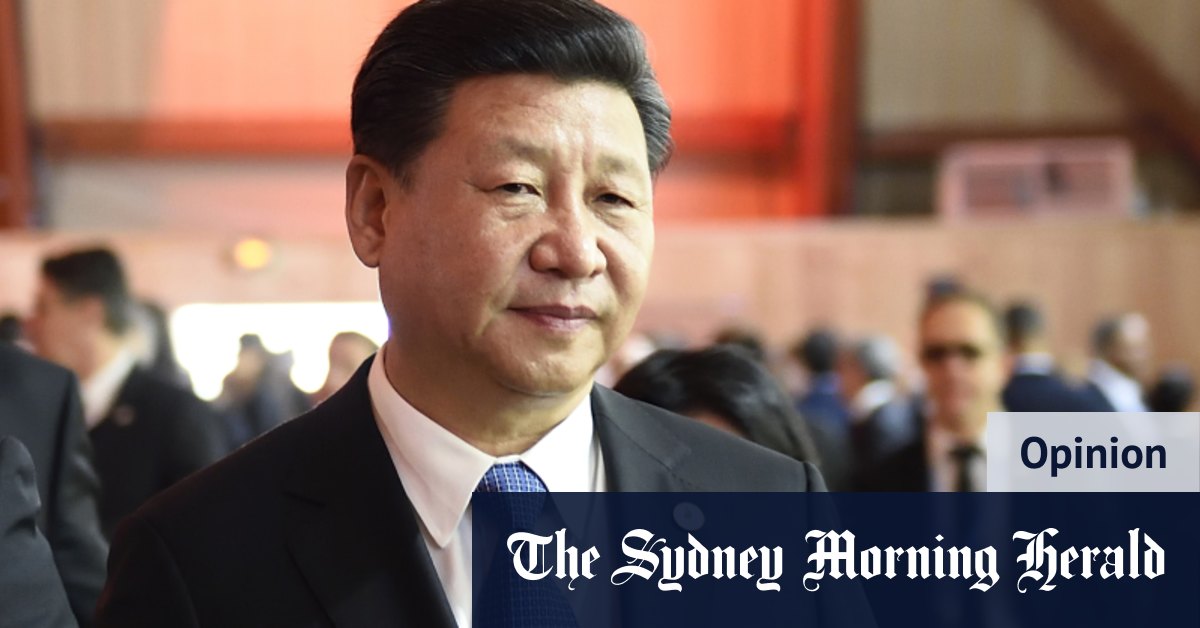The review of the trusts and their exposure to property developers, however, suggests that they aren’t entirely confident that the crackdown has reduced the risks the shadow banks pose to financial stability to non-threatening proportions.
They shouldn’t be complacent. The scale of the issues within China’s property sector, the size of the sector within China’s economy and the degree of leverage associated with property in China does make property and property finance a threat to stability.
While the size of the threat posed by shadow banking might have been reduced since 2017, the implosion within the property development sector, the scale of the industry – property accounts for about a third of China’s GDP – shadow banking exposures to property, and the extent of leverage in the property and non-banking sectors, mean it remains very material.

China Evergrande is at the center of the country’s property crisis, with its more than $US300 billion of liabilities providing context for the scale of the problem.Credit:Bloomberg
Property developers have defaulted on more than $US20 billion of largely offshore bonds this year and the sector shows no signs of stabilizing. Indeed, the distress has spread to some of the smaller regional banks, causing them to freeze depositors’ funds and sparking protests.
The pre-sales model used by the development sector has also ignited protests and refusals to service bank loans by mortgagors in more than 320 cities who are facing interest and principal payments on borrowings for uncompleted apartments.
loading
At the epicenter of those protests is the world’s most indebted developer, China Evergrande, with its more than $US300 billion ($431 billion) of liabilities providing some context for the scale of the property crisis.
The concern of the authorities is that, even though they have shrunk the shadow banking sector, it remains sizeable and opaque and its relationships with the rest of the financial system, and banks in particular, are often disguised by complex and less than transparent structures.
China’s big banks are well-capitalized and heavily regulated but, as a spate of scandals and outright fraud has shown, its small and medium-sized banks in the regions have sometimes taken on riskier exposures than would be considered prudent, using off-balance sheet structures to obscure what they have been doing.
In some respects, that’s a natural consequence of the tightening of bank capital and credit standards after the global financial crisis in 2008 even as the authorities were encouraging an apartment-building binge to stimulate economic activity and provide housing to accommodate the large-scale migration of rural Chinese to the major economic centres.
It pushed lending out of the mainstream banking sector and into the shadows and, despite the efforts to reign in and regulate non-bank activity in recent years, it appears the authorities are now concerned – in the midst of the property crisis – that they didn’t ‘t clamp down on non-bank activity hard enough.
The scale of the issues within China’s property sector, the size of the sector within China’s economy and the degree of leverage associated with property in China does make property and property finance a threat to stability.
The National Audit Office review of the trusts is looking, not just at the extent of the losses and prospective losses the trusts and their investors are facing but for the nature of those continuing linkages between the trusts and the wider financial system.
There are 68 trusts in China with about $4.3 trillion of assets – property loans, shares, bonds and commodities – under management, with property accounting for at least $500 billion of the total.
Their funding tends to be short term and therefore the potential for liquidity crunches and “runs” — a stampede by investors to get their money out in moments of crisis – and the kind of spreading contagion that the mortgagors’ and depositors’ protests have displayed. is latent.
China’s economic model, with its heavy emphasis on centrally driven growth targets, has been funded by increasing levels of debt at every level of the economy and has resulted in households that are leveraged and whose wealth is overexposed to a property market that is imploding.
loading
That risks, not just financial stresses within the economy, but the kind of social unrest that, in the lead up to the extension of his period as party leader to an unprecedented third term, Xi Jinping wouldn’t want to see develop.
The Business Briefing newsletter delivers major stories, exclusive coverage and expert opinion. Sign up to get it every weekday morning.
